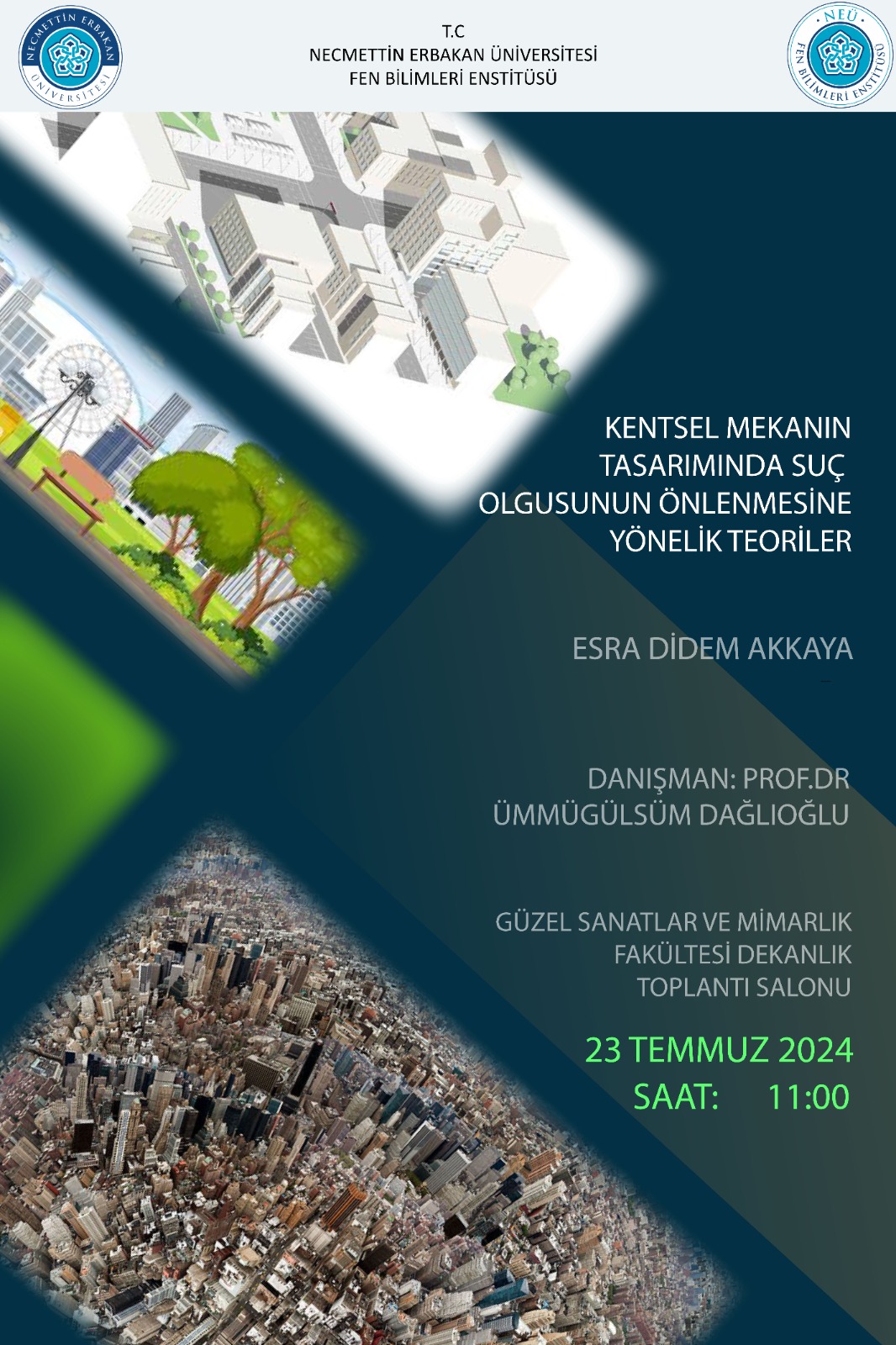
Theories for Preventing Crime in the Design of Urban Space - Seminar

| Date | 23.07.2024 |
| Department | Faculty of Fine Arts and Architecture |
| SDG |   |
With this study, based on the relationship between space and people, which is the social dimension of urban design; The theories of the safe city approach, which emerged for the purpose of crime prevention, are discussed from an inclusive, multidisciplinary and preventive perspective, and the theories of 'Defensible Spaces Theory' and 'CPTED (ÇTASÖ) - Crime Prevention Through Environmental Design' are explained in detail. “Defensible Spaces Theory,” proposed by architect Oscar Newman in 1972, suggests that the physical design of a living environment can be used to reduce crime. Newman states that three key elements – territoriality, surveillance, and image/environment – act both individually and together to help create a safe environment. “Crime Prevention Through Environmental Design (CDES)” was first put forward by Ray Jeffery (1971), a criminologist. However, it remained in the background because it did not include physical interventions as in the concept of defensible spaces. This concept has changed and developed in the process until today. The currently accepted final version was developed by Timothy Crowe with additions made in 1991 and 2000. Although the EU Commission has accepted the "Prevention of Crime by Environmental Design (CPTED)" rule; Türkiye is quite far from this concept in terms of law and practice. The legal basis is mostly within the framework of urban security; It is limited to the implementation of preventive law enforcement activities in urban areas.